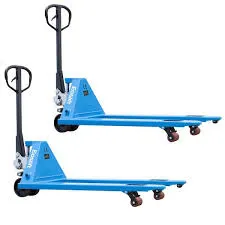


Understanding Fall Protection Manufacturers Ensuring Safety in the Workplace
In industries such as construction, roofing, and maintenance, the risk of falls from heights is a significant safety concern. To combat these dangers, fall protection systems are vital, and the manufacturers of these systems play a critical role in ensuring workplace safety. This article delves into the importance of fall protection manufacturers, the types of products they offer, and the factors to consider when choosing a fall protection system.
The Importance of Fall Protection
Falls are one of the leading causes of workplace injuries and fatalities. According to the Occupational Safety and Health Administration (OSHA), falls account for a substantial percentage of workplace accidents. To mitigate these risks, businesses are mandated to implement effective fall protection systems. Fall protection manufacturers have the expertise to design and produce equipment that meets safety regulations and industry standards. Their innovations not only protect workers but also enhance organizational productivity by creating a safer working environment.
Types of Fall Protection Products
Fall protection manufacturers offer a diverse range of products, each tailored to specific applications and environments. Some of the primary categories include
1. Personal Fall Arrest Systems (PFAS) These systems typically consist of a harness, lanyard, and anchorage point. PFAS are designed to stop a fall before a worker can hit the ground.
2. Guardrails Permanent or temporary guardrails can be installed around edges or openings to prevent accidental falls, creating a physical barrier.
3. Safety Nets Used in situations where anchoring a harness may not be feasible, safety nets catch workers who might fall, thereby minimizing the risk of injury.
4. Lifelines and Rope Grab Systems These allow workers to move freely while remaining secured to an overhead line, providing flexibility and security.
5. Training and Consultation Services Many manufacturers also offer training to ensure workers understand how to use the equipment properly and recognize potential hazards.

Choosing the Right Fall Protection System
Selecting the appropriate fall protection system is crucial for ensuring safety and compliance with regulations. Here are a few factors to consider when choosing a system
1. Nature of the Worksite Assess the specific hazards present in your workplace. Different environments, such as roofs, scaffolding, and aerial lifts, require tailored fall protection solutions.
2. Type of Work Being Performed The nature of the job impacts equipment choices. For example, jobs that require frequent movement may benefit from a versatile harness and lanyard system.
3. Regulatory Compliance It’s essential to choose a system that complies with OSHA and other relevant safety regulations. Manufacturers should provide products that are tested and certified according to these standards.
4. Comfort and Fit Workers are more likely to use fall protection equipment that is comfortable and well-fitted. Therefore, it’s crucial to select harnesses and other gear that accommodate different body types while allowing for freedom of movement.
5. Manufacturer Reputation Researching manufacturers and their products can offer insights into their reliability and safety record. Look for companies with a solid reputation, positive customer reviews, and a commitment to innovation.
The Role of Innovations
The fall protection industry is continually evolving, with manufacturers investing in research and development to enhance safety features. Innovations such as smart harnesses equipped with sensors to detect falls, lightweight materials that increase mobility, and systems that facilitate easy connection and disconnect contribute significantly to worker safety.
Conclusion
Fall protection manufacturers are integral to workplace safety, providing essential products and services that help mitigate the risks associated with working at heights. Selecting the right systems requires careful consideration of various factors and a focus on compliance with safety regulations. As the industry continues to innovate, it is crucial for employers to stay informed about the latest technologies and best practices to ensure the safety of their workers. Investing in effective fall protection solutions is not just about compliance; it’s about creating a culture of safety that values the well-being of every worker.



